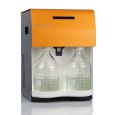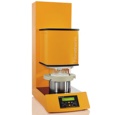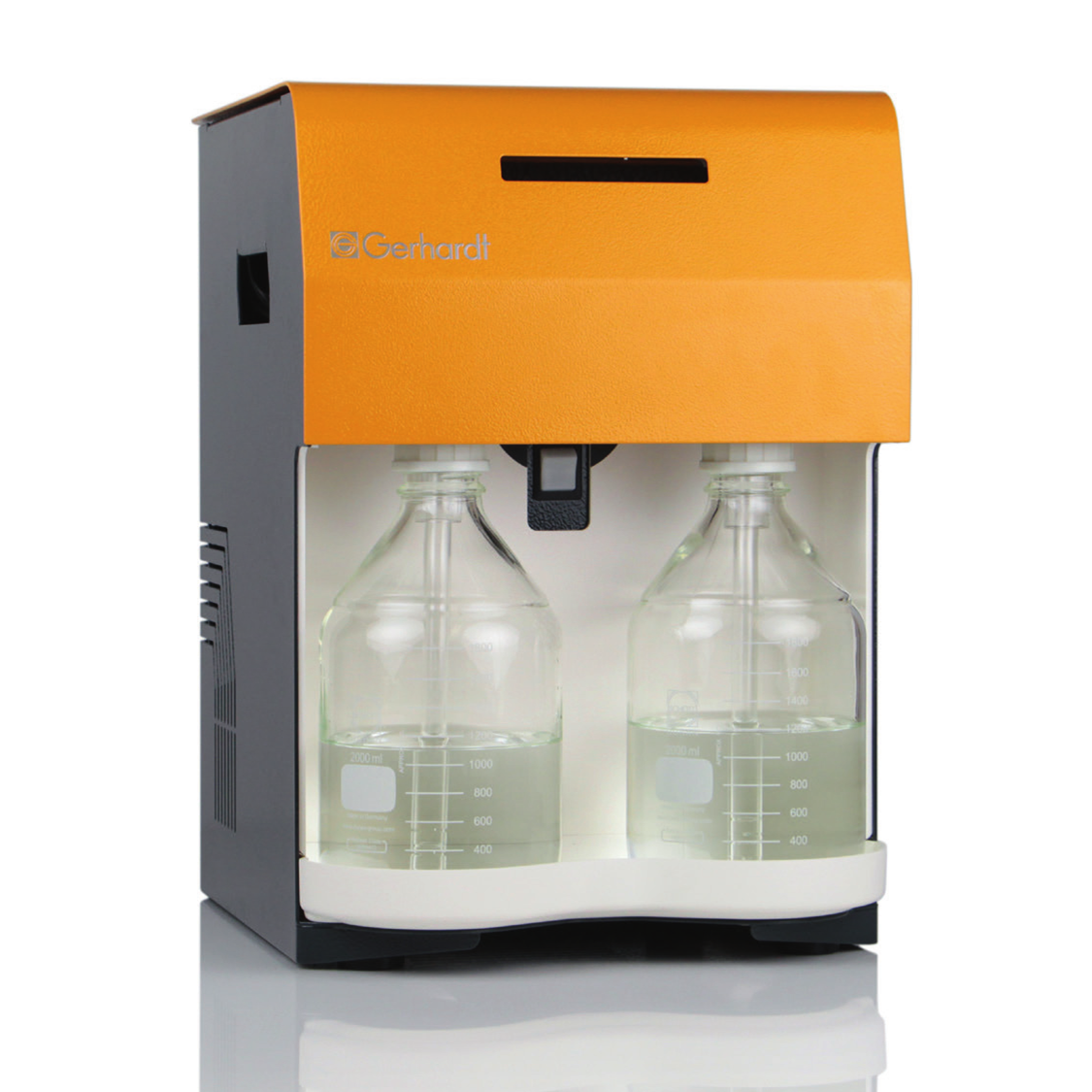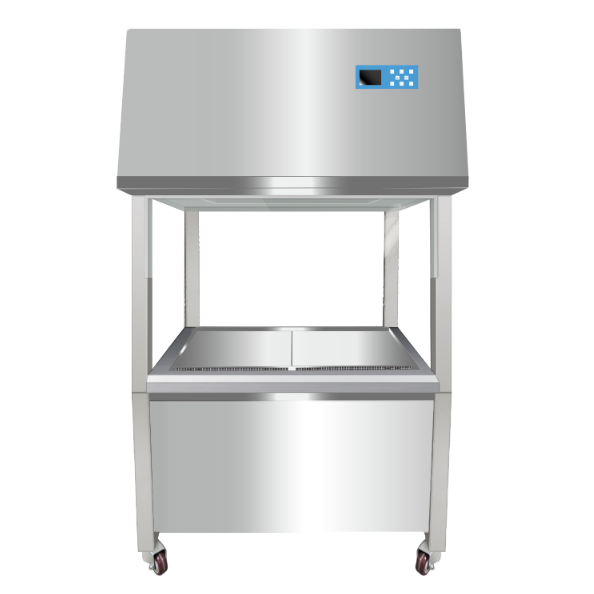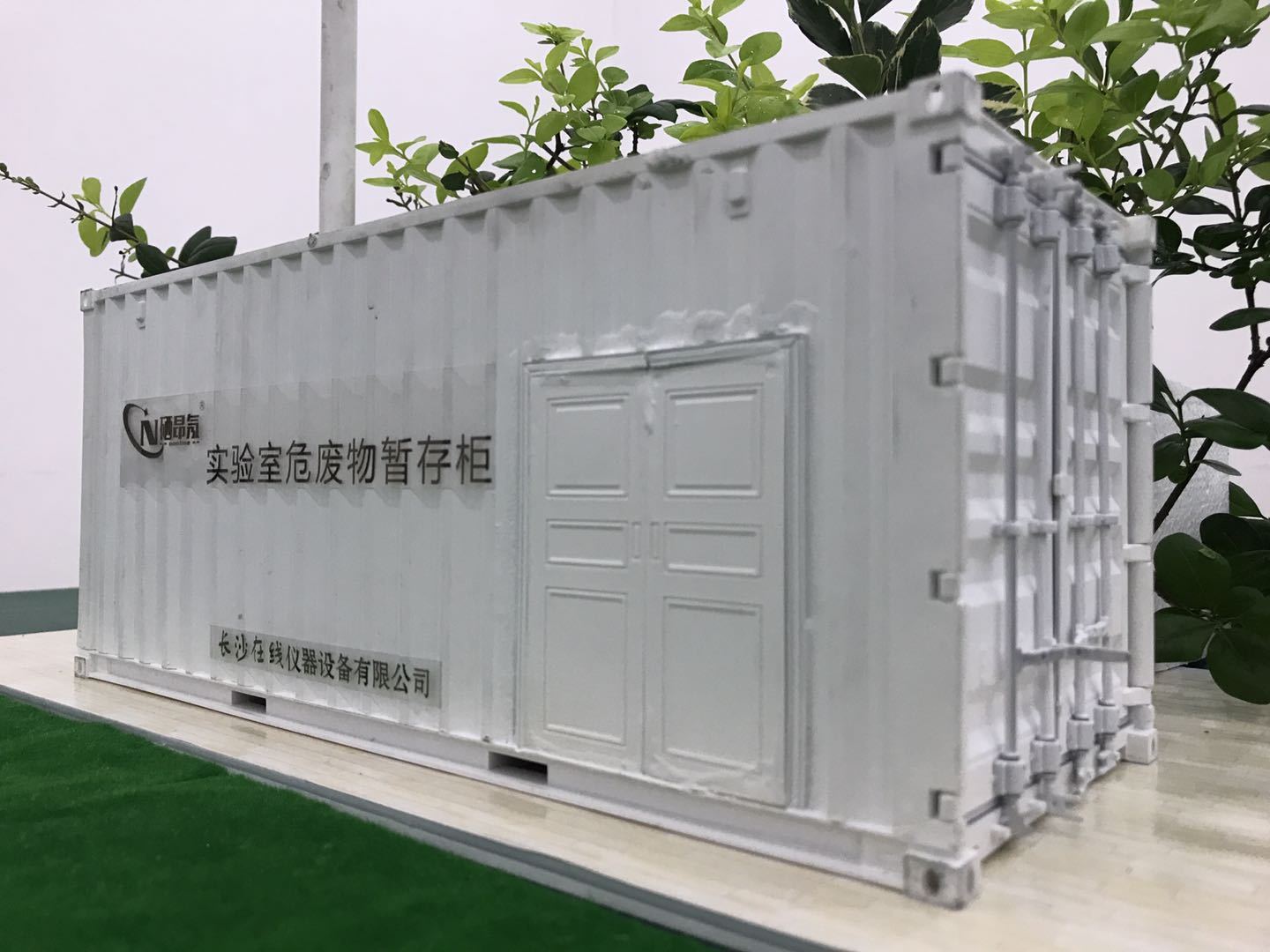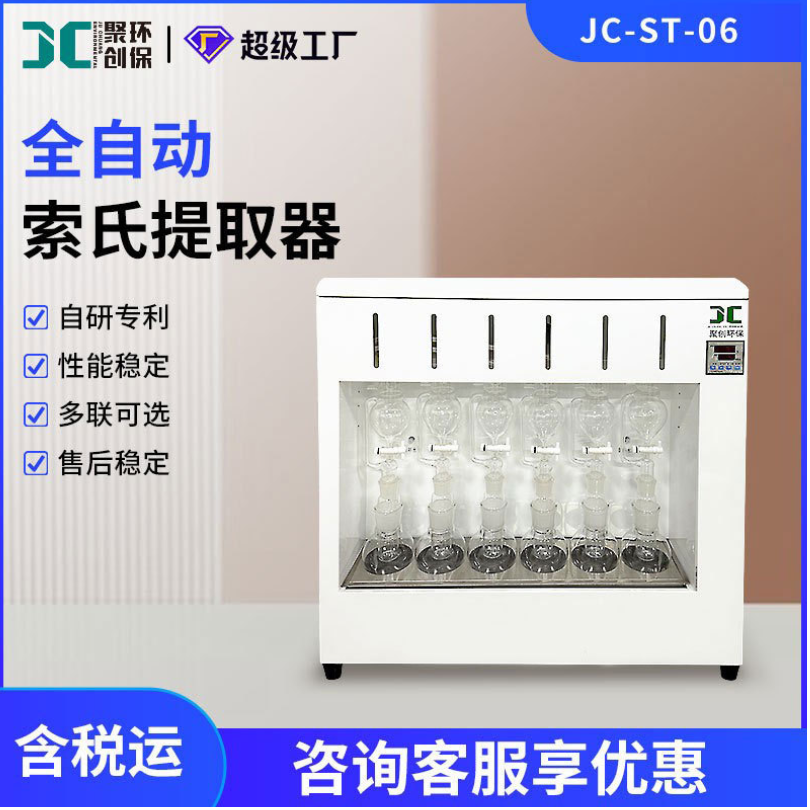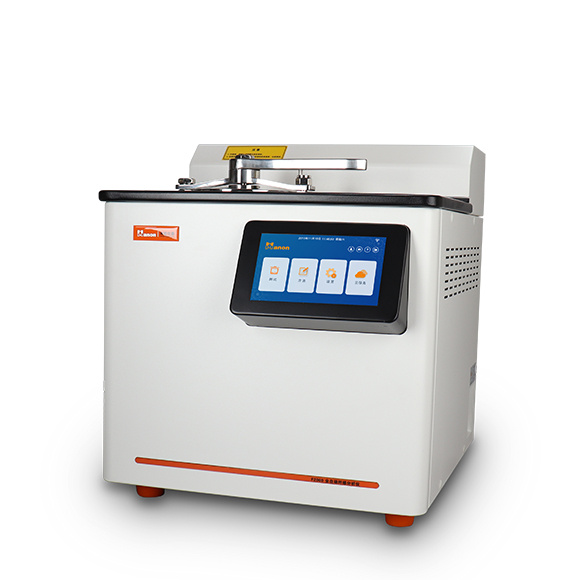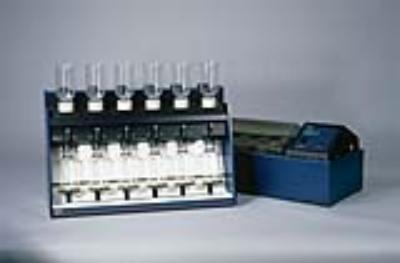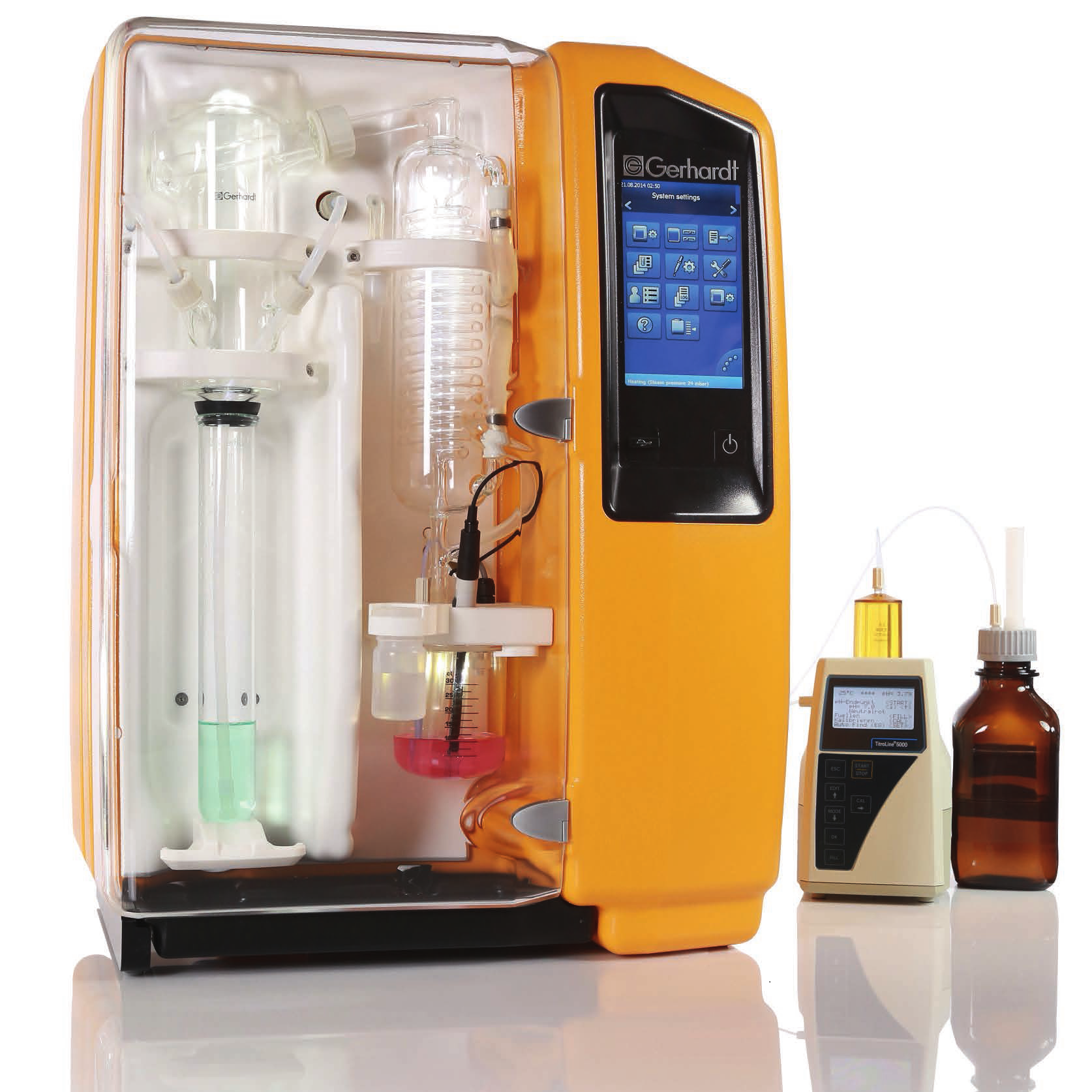
方案详情
文
烹饪方法对莲藕营养成分及抗氧化性能的影响
Effect of cooking methods on nutritional composition and antioxidant properties of lotus (Nelumbo nucifera) rhizome
使用格哈特公司凯氏定氮仪、索氏脂肪仪以及纤维仪检测莲藕的蛋白质、脂肪、纤维含量。
方案详情

烹饪方法对莲藕营养成分及抗氧化性能的影响Effect of cooking methods on nutritional composition and antioxidant properties of lotus (Nelumbo nucifera) rhizome使用格哈特公司凯氏定氮仪、索氏脂肪仪以及纤维仪检测莲藕的蛋白质、脂肪、纤维含量。FOODFood Research 4 (4):1207-1216 (August 2020)Journal homepage: http://www.myfoodresearch.comRESEARCH 1208Chen and Tengku Rozaina / Food Research 4 (4)(2020)1207-1216 Received in revised form: 18 February 2020 Accepted: 20 February 2020 Available Online: 11 April 2020 Keywords: Lotus rhizome. Proximate composition, Minerals. Vitamin C. Antioxidant. Cooking methods DOI: https://doi.org/10.26656/fr.2017.4(4).359 Article history: Abstract Received: 28 October 2019 Lotus (Nelumbo nucifera) rhizome possessed abundant nutrients such as vitamin C,minerals and antioxidants. The consumption of lotus rhizome is limited in Malaysia due tolimited information on its nutritional values. Cooking or heat treatment may causenutritional changes in the food, however, there is a lack of study on the effect of cookingmethods on nutritional contents of lotus rhizome. In this study, the effects of cookingmethods (steaming, boiling and deep-frying) on nutritional composition (proximate,vitamin C and minerals) and antioxidant properties (total phenolic content, total flavonoidcontent, DPPH and ABTS scavenging activity) of lotus rhizome were investigated.Results showed that boiling significantly increased moisture and crude fibre but decreasedash, crude fat and crude protein contents of lotus rhizome. Meanwhile, deep fryingsignificantly reduced moisture and increased ash, crude fat, crude protein, crude fibre andcarbohydrate contents of lotus rhizome. Steaming induced no significant changes inmoisture, crude protein, crude fat, crude fibre, carbohydrate, vitamin C and mineral(potassium, zinc and copper) contents when compared to the raw lotus rhizome. Boilingsignificantly reduced the amount of vitamin C while deep frying caused a significantreduction in total phenolic content, total flavonoid content and antioxidant activity forboth ABTS and DPPH assays of lotus rhizome. In conclusion, steaming would be the bestcooking methods for lotus rhizome while deep frying is not recommended to retain thenutritional composition and antioxidant properties of lotus rhizome. 1. Introduction Lotus (Nelumbo nucifera) in the Nelumbonaceaefamily is an aquatic plant widely grown in Asiancountries such as China, Japan and India. It is cultivatedfor food, ornamental and medicinal purpose (Zhao et al.,2016). According to Wang (2014), lotus rhizome is richin starch, sugars, lipids, proteins, minerals, vitamins,alkaloids, flavonoids and other biochemical substances.It contains alkaloids that is used in treating arrhythmia,sunstroke, fever, diarrhoea, dysentery, dizziness andstomach problems (Shad et al., 2011). Furthermore, italso has pharmacological:activities such as anti-diarrhoeal, anti-inflammatory, antioxidant, antipyretic,diuretic, hypoglycaemic, immunomodulatoryaandpsychopharmacological activities (Bhardwaj and Modi,2016; Yi et al., 2016). The extract of lotus rhizomeespecially from its nodes contains a high amount ofantioxidant such as phenolic, tannin and flavonoid , 一I *Corresponding author. (Moro,2012). I ( Lotus rhizome has potential to be cultivated widelyas another important crop in Malaysia, just like sweetpotato or cocoyam, as it can be harvested year-round andcan be grown in an environment which is unfavourablefor other traditional agricultural crops. However, theproduction of lotus in Malaysia is limited due to the lowmarket demand compared to other vegetables. Theconsumption of lotus rhizome in Malaysia is limited toChinese and Indian population. The Malay population inMalaysia rarely consumes the lotus rhizome since notmuch information on the nutritional value of it isavailable. The popularity of lotus rhizome is mainly dueto its attractiveness white colour and the crispnesstexture (Li et al., 2017). The fresh lotus rhizome ispopular to be sliced and deep-fried as chips for snacks.This is because deep-frying creates unique texture,flavour and taste for the food (Oke et al.,2017). According to Metha (2015), vegetables are cookedbefore consumption to improve their palatability, aroma,taste, appearance, and texture to achieve high acceptanceamong consumers. Cooking or processing methodcaused nutrients loss in food product and the amount ofloss was depended on the method used. The heat appliedduring cooking causedthe nutrients.,whichweresensitive to heat, light, oxygen and pH, to be unstableand lead to their thermal degradation (Omotosho et al.,2016). Most consumers eat lotus rhizome because of itsmild sweet flavour or as a part of their traditional foodhabit without knowing the nutritional value of lotusrhizome. There is a lack of research done purposely toinvestigate the effect of different cooking methods on thenutritional composition and antioxidant properties oflotus rhizome. Li et al. (2017) focused on the effect ofsteaming and boiling on the physicochemical propertiesof lotus (Nelumbo nucifera) root, such as moisturecontent. texture and volatile compounds(methylcyclohexance and ethylcyclohexance). Anotherstudy conducted by Zhao et al. (2016) investigated theeffect of heat blanching and calcium immersion onphysicochemical properties related to the texture ofrhizome. Meanwhile, Vora and Srinivasan (2015) studiedon the nutritional benefits of raw and fried lotus stems.Fryingg(causedthereductionof iron.calcium,phosphorus, sodium and vitamin C content and increasedthe amount of carbohydrate, protein and dietary fibre inlotus stem (Vora and Srinivasan,2015). The objectives of this study are to determine theeffect of cooking methods on the proximate composition,vitamin C, minerals content, and antioxidant propertiesof lotus(Nelumbonucifera) rhizome.Informationobtained1from thisSstudy would be tbeneficialtoconsumers in choosing the good cooking method forlotusSrhizomeeandi1sSexpectedto)encourageeiitsconsumption among various communities in Malaysia. 2. Materials and methods 2.1 Sample preparation and cooking treatments Five (5) kg of lotus (Nelumbo nucifera) rhizomeswith an average length of 45.0-57.0 cm and width of 4.0-5.0 cm were purchased from the farmer at Ipoh, Perak.The samples were washed, peeled and sliced into 0.3 cmof thickness. The lotus rhizome slices were divided intofour portions, where one portion was left as raw forcontrol while the other three portions were cooked bysteaming,5boilinganddeep-frying. Theecookingconditions were as follows: Steaming: Lotus rhizome slices (0.9 kg))weresteamed for 30 mins in 3 L of 100℃ boiling water in asteamer until they were tender. Boiling: Lotus rhizome slices (0.9 kg) were boiledfor 30 mins in 2 L of 100℃ boiling water in a stock potuntil they were tender. Deep frying: Lotus rhizome slices (0.9 kg) were deep-fried for 1.5 mins in a saucepan with 350 mL palm oil(Bagus, Sime Darby Plantation, Malaysia) at 170±2.0℃until they were crispy. All samples were cooked without adding any salt oradditional ingredients. The cooked samples were takenfor quick freezingnablast freezer (Technomac,Malaysia) at -20°℃ for two hrs and stored in a freezer(Panasonic, Malaysia) at -20°C before further analysis. 2.2 Proximate analysis Proximate analysis of lotus rhizome was carried outaccording to AOAC (2005) methods. The samples weredried in an oven (Chemopharm, Malaysia) at 105℃ forovernight for moisture determination. Analysis of ashwas carried out by heating the samples in a mufflefurnace (Carbolite, Malaysia) at 550℃ for overnight.Crude fat content was analysed using petroleum ether (EMSURE, Germany) as extraction solvent. Crude protein contentwas measured using a Kjeldahl method with Turbothermdigestion unit (Gerhardt, Malaysia) and1Vapodest 30Sdistillation unit (Gerhardtt,Malaysia). The conversionfactor for nitrogen-protein percentage used was 6.25.The samples were boiled with 0.13 M H2SO4(R&MChemical, Malaysia))aand 0.31 MNaOH (R&MChemical, Malaysia) inGerhardt Fibre Bag systemffordetermination of crude fibre content. The carbohydratecontent of the sample was calculated by subtracting100% with the sum of percentage of moisture, ash, crudefat, crude protein and crude fibre contents. 2.2.1 Oil uptake and moisture loss The oil uptake and moisture loss of deep-fried lotusrhizome were determined according to Kim et al. (2015)method and calculated as follows: Where Wp = mass of cooked sample (g); Wa= mass ofraw sample (g); Fp= fat amount of cooked sample (g/1gwet basic); Fa = fat amount of raw sample (g/1g wetbasic); Mp = moisture content of cooked sample (g/1g wet basic); and Ma = moisture content of raw sample(g/1g wet basic). antioxidant extraction of lotus rhizome was calculatedusing the following equation: 2.3 Vitamin C analysis Lotus rhizome juice was prepared by grounding 10 gof chopped lotus rhizome slices with 50 mL distilledwater (Hussain et al., 2016). The mixture was filteredand added with 3% metaphosphoric acid (EMSURE,Germany)untilthe volume became 100 mL..Determination of vitamin C was carried out according toPegg et al. (2010) method. Lotus rhizome juice (10 mL)Was titrated with 2,6-Dichlorophenolindophenol(DCPIP) dye solution until pink colour exists for 15 s.The ascorbic acid content was calculated using theformula below: 0.0543Ascorbic acid content (mg/100g)=(X-B)×()×10010Where X= volume for test solution titration (mL) and B= volume for test blank titration (mL). 2.4 Mineral analysis Mineral extraction of lotus rhizome samples wascarried out according to AOAC (2005) method. Lotusrhizome (1.5 g) was incinerated in a muffle furnace toform ash to be evaporated to dryness on a hot plate(Favorit, Malaysia) with 2 mL of concentrated HCl(EMSURE, Malaysia). Subsequently, 10 mL of 20%concentrated HNO3 (Merck, Germany) was added. Afterincubation in water bath at 60°C for 1 hour, the mixturewas diluted into 100 mL with distilled water and filteredusing Whatman No.42 filter paper prior to analysis.Determination of mineral content of lotus rhizome wascarried out using Inductively Coupled Plasma-OpticalEmission Spectrometry (ICP-OES) (Optima8300.PerkinElmer, USA) according to Akpinar-Bayizit et al.(2010) method. 2.5 Antioxidant analysis 2.5.1 Antioxidant extraction Antioxidant extraction of lotus rhizome slices wascarried out according to Leong et al. (2012) method.Chopped lotus rhizome samples were dried in an oven(Southstar, Malaysia) at 50℃ for 48 hrs until almost 5-7% moisture content left. They were grounded to pass a1 mm sieve. Lotus rhizome powder (5.0 g) was mixedwith 50 mL of methanol (EMSURE, Germany) forovernight incubation in darkness at room temperature(28°℃)..Themixture Was centrifuged (HettichZentrifugen, Malaysia) at 3000 r/min for 15 mins. Thesupernatant Was separated1throughhffiltrationwithWhatman No.1 filter paper and was evaporated at 40℃using a rotary evaporator (Buchi, Malaysia). The yield of 2.5.2 Total phenolic content (TPC) Total phenolic content (TPC) in lotus rhizome wasdetermined using the Folin Ciocalteu method accordingto Zhao et al. (2014). Lotus rhizome extract solution of0.1 mL of 5 mg/mL was mixed with 2 mL distilled waterand 1 mL of Folin Ciocalteu phenol reagent (R&MChemical, Malaysia) for incubation in darkness at roomtemperature (28°℃) for 5 mins. A total of 5 mL of 20%aqueous NazCO3 solution (Bendosen, Malaysia)Wasadded followed by incubationfor 60 minsS..Theabsorbance was measured at 735 nm using UV-Visspectrophotometer (Interscience, Malaysia) with distilledwater as blank. Gallic acid (R&M Chemical, Malaysia)was used as standard. TPC (GAE/g DE) in lotus rhizomewas calculated through a linear regression equationobtained from gallic acid standard graph. 2.5.3 Total flavonoid content (TFC) Aluminium chloride coloration method was adoptedfor the estimation of total flavonoid content (TFC) inlotus rhizome according to Zhao et al. (2014). Lotusrhizome extract solution of 0.6 mL of 10 mg/mL wasmixed with 3.75 mL distilled water and 0.225 mL of 5%aqueous NaNOs solution for incubation in darkness atroom temperature (28°℃) for 6 mins. A total of 0.45 mL10% AlCl; solution (Sigma-Aldrich, USA), 1.5 mL of 1mol/mL NaOH solution (R&M Chemical, Malaysia) and0.975 mL of distilled water were added to the mixturebefore incubation for 15 mins. The absorbance wasmeasured at 500 nm using UV-Vis spectrophotometer(Interscience, Malaysia) with distilled water as blank andcatechin (TGI, Tokyo) as standard. TFC (CE/g DE) inlotus rhizome was calculated through a linear regressionequation obtained from catechin standard graph. 2.5.4 DPPH radical scavenging activity DPPH radical scavenging activity of lotus rhizomeextract was measured as in accordance to Zhao et al.(2014) with slight modification. AAseries of lotusrhizome extract solution (0.5 to 3.0 mg/mL) was mixedwith 5 mL of 0.1 umol/L 2, 2-diphenyl-1-picrylhydrazyl(DPPH; Sigma-Aldrich, Germany) solution in methanolfor incubation in darkness at room temperature for 30mins. The absorbance was measured at 517 nm using UV-Vis spectrophotometer (Interscience, Malaysia) withmethanol as blank. The following equation was used forthe calculation of DPPH free radical scavenging activity: Where Acontrol =absorbance of the control and Asample =absorbance of the sample A graphof scavengingabilityaagainst theconcentration of the sample extract wasplotted todetermine the amount of lotus rhizome extract with 50%scavenging activity (ICs0) values. 2.5.5 ABTS radical scavenging activity Analysis of 2,2'-azino-bis(3-ethylbenzothiazoline-6-sulfonic acid) (ABTS) radical scavenging activity oflotus rhizome extract was conducted using Wu et al.(2011) method. ABTS* radical solution was prepared byincubating the mixture of 3 mL of 7 mM ABTS stocksolution (Sigma-Aldrich, USA) and 3 mL of 2.45mMpotassium persulfate (EMSURE, Germany)at roomtemperature for 16 hrs in darkness. The mixture wasdiluted with 80% ethanol (HmbG Chemical, Malaysia) toobtain absorbance of 0.70±0.005 at 734 nm using UV-Vis spectrophotometer (Interscience, Malaysia). A totalof 0.3 mL of a series of lotus rhizome extract solution(0.5 to 3.0 mg/mL) was mixed with 2.7 mL of ABTS*radicaallSsolutionnandincubatedfor 3300mins.TTheabsorbance was imeasured at7734 nm using UV-Visspectrophotometer with1Imethanol as blank.TThescavenging ability (%) and ICso values were determinedas previously described for DPPH. 2.6 Statistical analysis All analyses were carried out in the triplicate anddata was expressed in mean ± standard deviation form.Statistical analysisSWasScarried out using one-wayANOVA and Tukey's-b using SPSS version 16 (SPSSInc.,USA). 3. Results and discussion 3.1 Proximate composition Table 1 shows the raw lotus rhizome contained86.86% moisture, 1.05% ash, 0.14% crude fat, 2.34%crude protein, 0.80% crudefibreand 8.81%carbohydrate. This finding is in accordance with Wang(2014) findings on lotus rhizome samples. Meanwhile, Read (1982) reported that lotus rhizome contained 1.70%protein, 0.10% fat, 9.7% carbohydrate and 1.10% ash.The variation in the proximate composition of lotusrhizomes in the present and previous studies may be dueto differences in the maturity level and planting locationof lotus rhizome samples. This finding is supported byAgunbiade et al. (2017) and Chinomso et al. (2018) onorange-fleshed sweet potato and on Moringa oleiferaleaves in their studies, respectively. The moisture content of steamed (89.20%))andboiled lotus rhizome (91.51%) was significantly differentwith raw (86.86%) lotus rhizome (p <0.05). A similarresult was reported by Bembem and Sadana (2013) andOkibe et al. (2016) where the moisture content of theirpotato and pumpkin leaves were higher after boiled,respectivelyy.. According to Lola (2009), fibre and otherchemical compoundsSpresented in theevegetablesabsorbed water during boiling. In this study, the moisture content of the deep-friedlotus rhizome was lowest (15.37%) compared to raw andother cookedlotus rhizomesS..ThisSfindinggis inagreement with Shunmugapriya and Kalaiselvan (2017)who reported that fried garlic possessed the lowestpercentage of moisture content compared to steamed andboiled samples. The high heat applied during deep-fryingcausedthe moisture escaped ffrom food throughevaporation (Omotosho et al., 2016; Oke et al.,2017).On the other hand, the ash content of deep-fried samplethe highest (3.71%), followed by raw (1.05%),steamed (0.69%) and boiled sample (0.17%). Boilingmight reduce more ash content than steaming due to theleaching out of mineral into boiling water (Lola, 2009;Wang et al., 2012). The ash increment occurred in deep-fried samples Was related too themoisturellost.Dehydration concentrated the nutrient left in the sampleand thus increased the ash content in the fried product(Yodkraisri and Bhat, 2012). There was no significant difference (p>0.05) foundbetween crude fat content of raw and steamed (0.11%)samples and between crude fat content of raw and boiled(0.06%) lotus rhizome (Table 1). A similar result wasreported by Hwang et al. (2012) on red pepper. A largeincrease of crude fat content was found on the deep-friedlotus rhizome in the present study and this1is in Table 1. Proximate composition on a wet weight basis for raw and cooked lotus rhizomes Lotus rhizome Proximate composition Moisture (%) Ash (%) Crude fat (%) Crude protein (%) Crude fibre (%) Carbohydrate (%) Raw 86.86±0.35° 1.05±0.05° 0.14±0.01 2.34±0.17° 0.80±0.02°C 8.81±0.51” Steamed 89.20±0.25° 0.69±0.08° 0.11±0.01° 2.22±0.12° 1.01±0.06° 6.76±0.46° Boiled 91.51±0.53° 0.17±0.01 0.06±0.01° 0.77±0.05° 2.06±0.07° 5.43±0.46° Deep fried 15.37±1.90° 3.71±0.25° 31.41±1.07* 8.33±0.38° 12.28±0.20° 28.91±2.67° Mean± SD, n=3. Values with different superscript letters in the same column are significantly different at p<0.05 e accordance with Omotosho et al. (2016) on unripeplantain. Deep-fried food increased its fat contentthrough extra fat absorption from the frying oil anddecreased its moisture content through moisture escapingfrom food due to high heat (Bordin et al., 2013). The moisture loss and oil uptake of deep-fried lotusrhizome were 73.88% and 31.27%, respectively. Thisfinding is in agreement with Manjunatha et al. (2012) onGethi (Dioscorea kammonensis kunths) strips. Accordingto Kita (2014), moisture loss would cause dehydrationwhich contributed to changes in cell structure andformation of small channel matrix occupied subsequentlyby the frying oil. Vigorous water escaped from vegetablehad limited the oil absorption during the frying process,causing a higher rate of moisture loss than oil uptake(Bouchon et al.,2003). The highest crude protein content was found on deep-fried (8.33%) lotus rhizome followed by raw (2.34%),steamed (2.22%) and boiled (0.77%) lotus rhizome. Thelarge increment in crude protein content of deep-friedfoodWas(contributed by the moisturelossSwhichconcentratedtthe organic materialslefftt(Vora andSrinivasan, 2015) and by the hydrolysis of insolubleproteincompoundwhichincreased theproteinavailability (Reid et al., 2016). Meanwhile, boilingdecreased crude protein content of lotus rhizome, whichis in accordance with the previous studies on potato(Bembem and Sadana, 2013) and red pepper (Hwang etal., 2012). Soluble nitrogenous substance leached outinto boiled water when cooked, causing more loss ratherthan denaturation (Reid et al., 2016). Deep frying increased the crude fibre content oflotus rhizome from 0.80% to 12.28%. Similar resultswere observed on four varieties of potato (Murniece etal., 2011), lotus stem (Vora and Srinivasan, 2015) andpurple flesh potatoes (Tian et al., 2016). This is probablydue to structural damage to the cells, which induced amarked IOSSof other liposoluble compoundIsSandincreased fibre content (Sun et al., 2014). Furthermore,the increase in fibre content in cooked samples were dueto dehydration because of moisture loss (Vora and Srinivasan, 2015). The highest carbohydrate content wasalso found in the deep-fried lotus rhizome, followed bysteamed, raw and boiled lotus rhizome. 3.2 Vitamin C content Table 2 shows the amount of vitamin C and mineralsin the raw and cooked lotus rhizomes in the presentstudy. The raw lotus rhizome contained 15.02 mg/100 gvitamin C. This amount was higher than the vitamin C inthe lotus (Nelumbo nucifera) rhizomes reported by Shadet al. (2011; 0.26-0.35 mg/g) but lower than USDA(2016;44 mg/100 g). The differences probably due tocultural practice,maturity, preharvest climaticconditions, harvesting method influenced the vitamin Clevel in vegetables as stated by Lee and Kader (2000)and Duya (2017). Boiling and deep-frying significantly decreased thevitamin C content in lotus rhizome. The amount ofvitamin C in the boiled and deep-fried lotus rhizomes inthe present study were 3.80 mg/100 g and 1.45 mg/100g, respectively. This finding is in contrast with Ikanoneand Oyekan (2014) who reported that boiled Irish potatoand sweet potato lost more vitamin C than the friedsamples. Meanwhile, previous studies showed that thesteaming cooking method retained more vitamin C inpotato tubers (Bembem and Sadana, 2013), and broccoli,spinach and lettuce (Zeng, 2013) compared to the boilingmethod. This probably due to vitamin C is a heat-sensitive water-soluble nutrient as reported byIgwemmar et al. (2013). Apart from thermal degradation, vitamin C would belost through leaching out during boiling (Yuan et al.,2009). Thus, boiling contributed to the highest reductionof vitamin C content for lotus rhizome compared to deepfrying as it caused both thermal degradation and leachingout of vitamin C. Moreover, oxidation of vitamin Coccurred easily in aqueouIsSSsolution and could beenhanced by higher temperature, physical damage andrelative humidity (Lee and Kader, 2000). In the deep-fried sample, the loss of vitamin C was due to the highertemperature (170℃) applied during frying. The rate ofvitamin C retention in cooked food was influenced by Table 2. Vitamin C and mineral composition of raw and cooked lotus (Nelumbo nucifera) rhizome. Lotus Vitamin C Amount of mineral (mg/100 g) K Ca Mg Fe Zn Cu Mn Na P Raw 15.02 2437.53 151.75 134.61 13.27 5.08 2.64 1.49 74.14 804.63 ±1.36° ±37.95° ±1.76° ±1.34” ±0.32° ±0.07 ±0.05° ±0.02° ±0.89° ±5.63° Steamed 13.40 2512.60 201.20 148.89 24.34 5.55 2.96 2.57 76.97 914.58 ±1.14 ±37.06° ±1.67° ±1.31 ±1.37 ±0.45° ±0.45° ±0.03° ±1.27* ±3.29 Boiled 1.45 617.30 263.27 113.95 12.02 3.52 1.61 2.61 43.70 376.50 ±0.31 ±8.18° ±1.49 ±0.61° ±0.55° ±0.03 ±0.01° ±0.03° ±0.71 ±2.04° Deep fried 3.80 1481.53 92.06 69.19 7.27 2.53 1.29 1.09 52.12 442.28 ±0.54° ±29.92° ±1.92 ±1.07 ±0.73° ±0.27° ±0.01° ±0.01 ±0.57° ±4.52° Mean± SD, n=3. Values with different superscript letters in the same column are significantly different at p<0.05 the size of cut, use of cooking media, time andtemperature of cooking (Severi et al., 1997). 3.3 Mineral composition Raw lotus rhizome was composed of potassium(2437.53 mg/100 g), calcium (151.755mg/100 g), iron(13.27 mg/100 g), zinc (5.08 mg/100 g), copper (2.64mg/100 g), manganese (1.49 mg/100 g), sodium (74.14mg/100 g), and phosphorus (804.63 mg/100 g) as shownin Table 2. These findings were contradicted with USDA(2016) which reported that there were about 556 mgpotassium (K), 45 mg calcium (Ca), 1.16 mg iron (Fe),0.39 mg zinc (Zn), 0.26 mg copper (Cu), 0.26 mgmanganese (Mn), 40 mg sodium (Na) and 100 mgphosphorus (P) presented in lotus rhizome.Jongrungruangchok et al. (2010) stated that the mineralsof Moringa oleifera leaves obtained from differentregions in Thailand varied in mineral content because ofseveral reasons such as cultivated regions, growingconditions, nature of soil, seasonal changes, geneticallydifferent cultivars and storage conditions. Pongrac et al.(2016))aalsofound1that the2amountsof mineralcompounds for grains and sprouts were different fromeach other when they were cultivated in tap water ormoderately mineral-rich water. yt Three types of trend were observed for the mineralcontent in lotus rhizomes in the present study. The trendswere steamed > raw > deep-fried> boiled for K, Na andP; steamed> raw >boiled > deep-fried for Mg, Fe, Znand Cu; and boiled > steamed > raw> deep-fried for Caand Mn. According to Ikanone and Oyekan (2014),boiling caused a higher loss of Zn, Mg, Na and Ca andlower loss of Cu and Fe for Irish and sweet potatocompared to frying. Contrastingly, boiling caused moreloss for Na and Ca but not for Zn and Mg compared tofrying in the lotus rhizome in the present study. Vora andSrinivasan (2015) reported that frying reduced Na and Fein lotus stem whereas Okibe et al. (2016) reported thatsteaming retained K, Na, Ca, Mg, Fe and P better thanboiling as minerals were soluble in water and could leachout into boiling medium during cooking (Okibe et al.,2016). The findings in Vora and Srinivasan (2015) andOkibe et al. (2016) were in accordance with the presentstudy. Generally, different type of mineral would undergodifferent rate of losses even though they were treatedwith the same cooking method. This condition wascontributed by different proportion of soluble salt, whichleach out easily to the water when heating, and insolublesalt, which retained in the plant when heating (Faboyaand Aku, 1996). However, the increment of mineralcontent might occur after the breaking down of planttissue which increased the mineral extractability. Theheat applied degraded the antinutrient hindered theavailability of minerals, causing minerals to be found inthe cooked medium (Oulai et al.2013). 3.4 Antioxidant content The highestantioxidanteextraction yieldVWasobtained from raw lotus rhizome (4.03%), followed bysteamed (3.29%), boiled (2.23%) and deep-fried (1.19%)lotus rhizome (Table 3). A similar trend was reported bySultana et al. (2008) on peas, carrot, spinach and whiteturnip. The antioxidant extraction yield of raw lotusrhizome was in agreement with Yang et al. (2007) whoreported that the extract yield was ranged from 4 to 5%when using methanol as solvent. Contrastingly, theantioxidant extraction yield of lotus rhizome in Wu et al.(2011) and Zhao et al. (2014) studies were 10.70% and5.30 to 6.84%, respectively. Soil nature and1agro-climatic condition caused different bioavailability ofextractablee componentsin plant tissueaanddhencecontributed to the distinct values of extract yield ofantioxidant (Hsu et al., 2006). Total phenolic content (TPC) of raw lotus rhizome(50.66 mg GAE/g) was higher compared to the cookedsample of lotus rhizomes (11.96 -43.80 mg GAE/g).This finding is in agreement with Zhao et al. (2014) whofound the TPC of lotus rhizome in their studies rangedfrom 31.63 to 70.01 mg GAE/g. Contrastingly, Wu et al.(2011) reported a lower result with 16.14 mg GAE/g ofTPC in the raw lotus rhizome. The variation in the TPCwas contributed by the distinct environmental andgeological conditions of planting region as reported bySultana et al. (2008). This is supported by Podsedek(2005) who stated that the polyphenols content forvegetable was varied due to factors such as varieties,climatic conditions, cultural practices, maturity at harvest Table 3. Yield of antioxidant extraction, total phenolic content, total flavonoid content, IC50 values of DPPH and ABTS radicalscavenging activity for raw and cooked lotus (Nelumbo nucifera) rhizome. Lotus rhizome Antioxidant Total phenolic content Total flavonoid IC5o values of DPPH ICso values of ABTS content radical scavenging radical scavenging extraction yield (%) (mg GAE/g DE) (mg CE/g CE) activity (ug) activity (ug) Raw 4.03±0.11 50.66±4.49* 11.98±0.38* 1027 495 Steamed 3.29±0.13° 43.80±2.94 10.65±0.65° 1186 569 Boiled 2.23±0.14 20.78±1.70° 5.13±0.39° 1468 694 Deep fried 1.19±0.03 11.96±0.85° 2.54±0.13" 1705 799 Mean ± SD, n=3. Values with different superscript letters in the same column are significantly different at p<0.05 and storage conditions. Furthermore, boiling and deep-frying decreased the amount of TPC of lotus rhizomewhich was 20.78 mg GAE/g and 11.96 mg GAE/g,respectivelyV..Boiling contributed tottheeloss ofantioxidant content in vegetable due to leaching out ofphenolic compounds into boiling water (Sultana et al.,2008;Hwang et al., 2012; Sengul et al., 2014).Meanwhile, high heat applied during frying would losemost phenolic content compared to other cookingmethods, i.e. which caused thermal decomposition of thephenolic compound during frying (Turkmen et al.,2005;Kalkan and Yucecan,2013). -( Total flavonoid content (TFC) of lotus rhizomeshowed a similar trend with TPC, at which raw lotusrhizome (11.98 mg CE/g DE) contained the highestvalue of TFC, followed by steamed (10.65 mg/g DE),boiled (5.13 mg CE/g DE) and deep-fried (2.54 mg CE/gDE) lotus rhizome. Flavonoid compound whichissoluble in water could leach out during boiling (Bembemand Sadana, 2012). Thus, boiled vegetable had a lowerTFC than steamed samples. The TFC of raw lotusrhizome in the present study was in agreement with Zhaoet al. (2014) where the TFC in the lotus rhizome rangedfrom 7.33 to 13.21 mg CE/g DE. 3.5 Antioxidant activity Inhibitory concentration (IC50)values of DPPH(1027 pg) and ABTS (495 ug) assay for raw lotusrhizome were the lowest among all samples (Table 3).The lowest ICso value indicated the highest antiradicalactivity (Leong et al., 2012). Thus, the raw lotus rhizomecontained the highest antioxidant activity compared tothe cooked samples. Meanwhile, Wu et al. (2011)reported that the ICso value of DPPH and ABTS assayfor the lotus rhizome extract in their studies were 458.58ug and 4917.51 ug, respectively. Yang et al.(2007)suggested that the extracting solvent used affected theantioxidant activity of plant extract.The solventmethanol used in the present study was found to havehigher antioxidant extraction yield and hence higherantioxidant activity compared to the petroleum etherused by Wu et al. (2011). In addition, the growing regionalso influenced the antioxidant content and activity forlotus rhizome extract (Zhao et al., 2014). The IC5o value for ABTS assay of lotus rhizome inthe present study was lower than of DPPH due to thedifferent reaction of ABTS assay and DPPH assay. Thisis in accordance with Al-Laith et al. (2015) findings onthree wild medical plants (Aizoon canariense,Asphodelus tenuifoliusS2and EmexCspinosus). Forinstances. ABTSScation1radical could1react withhydrophilic and lipophilic antioxidant while DPPHradical can(only react with hydrophilic antioxidant (Boligon et al., 2014). Zhang and Hamauzu (2004) reported that cookingreduced the antioxidant components and activity ofbroccoli. In the present study, the IC5o value of DPPHassay for steamed, boiled and deep-fried lotus rhizomewere 1186 ug, 1468 ug and 1705 ug, respectively; whileof ABTS assay were 569 ug, 694 ug and 799 pg,respectively (Table 3). The steaming method caused theleast loss of antioxidant activity, followed by boiling inboth DPPH and ABTS assay. This is due to polyphenolscompound could dissolve in boiled water, thus boilingcaused a higher reduction in antioxidant activity invegetables compared to steaming (Hwang et al., 2012;Sengul et al., 2014). Meanwhile, Kalkan and Yucecan(2013) reported that frying caused the highest loss ofantioxidant activity in vegetables. Zhang et al.(2011)suggestedthatlonggtterm1exposure to the hightemperature degraded tthe antioxidant compoundinbamboo shoot. 4. Conclusion Methods of cooking affect the nutritionalcomposition and antioxidantpropertiesS(oflotus(Nelumbo nucifera) rhizome. Boiling and deep-fryingbrought prominent change on the moisture, ash, crudefat, crude protein, crude fibre and carbohydrate contentof lotus rhizome whereas steaming brought only a smallchange of proximate composition when compared to rawlotus rhizome. In addition, steamed lotus rhizome causedthe lowest loss of vitamin C and minerals (K, Na, P, Mg,Fe, Zn, Cu, Ca and Mn) while boiling gave the highestloss of vitamin C and deep-frying gave the highest lossof most of the minerals in the lotus rhizome. Deep fryingcausedthe ssignificant degradation of antioxidantproperties, followed by boiling and steaming. Thus, deep-frying is not recommended for healthy preparation as itincreased the fat content significantly in the final productand contributed to a high loss of moisture, vitamin C,minerals and antioxidant properties of lotus rhizome.Overall, steaming is considered as the best cookingmethods for lotus rhizome asit retained proximatecomposition, vitamin C, minerals, TPC, TFC, andantioxidant activity better than boiling and deep-frying. nConflict of Interest The authors declare no conflict of interest. Acknowledgments Authors would like to thank the Faculty of Fisheriesand Food Science, Universiti Malaysia Terengganu forthe funding and the laboratory staff for their technicalassistance in this study. References Agunbiade, L.W., Abdulsalam, M. and Olaitan, O.D.(2017).Effectsof plantinglocationsS(on theproximate compositions of Moringa Oleifera leaves.Journal of Applied Science andEnvironmental21(2). Management, 331-338. https://doi.org/10.4314/jasem.v21i2.14 Akpinar-Bayizit, A., Turan, M.A., Yilmaz-Ersan, L. andTaban, N. (2010). Inductively Coupled PlasmaOptical- Emission Spectroscopy determination ofmajor and minor elementsiinnvinegar. NotulaeeBotanicae Horti Agrobotanici Cluj-Napoca, 38(8),64-68. Al-Laith, A.A., Alkhuzai, J. and Freije, A. (2015).Assessment of antioxidant activities of three wildmedicinal plants from Bahrain. Arabian Journal ofChemistry, 46(8),1-23. https://doi.org/10.1016/j.arabjc.2015.03.004 Association of Official Analytical Chemists (AOAC).(2005). Official methods of analysis of AssociationOfficial Analytical Chemists International. 16 ed.Rockville, MD: AOAC International. Bembem, K. and Sadana, B. (2013). Effect of cookingmethods on thee nutritional composition andantioxidant activity of potato tubers. InternationalJournal of Food and Nutritional Sciences, 2(4), 26-一30. Bhardwaj, A. and Modi, K.P. (2016). A review ontherapeutic potential of Nelumbo nucifera (Gaertn):The sacredlotus.1International Journall(ofPharmaceutical Sciences and Research,7(1), 42-54. Boligon, A.A., Machado, M.M. and Athayde, M.L.(2014). Technical evaluation of antioxidant activity.MedicinalChemistry,4(7),517-522. https://doi.org/10.4172/2161-0444.1000188 Bordin, K, Kunitake, M.T., Aracava, K.K. and Trindade,C.S.F. (2013). Changes in food caused by deep fatfrying - A review. Archivos latinoamericanos denutricion, 63(1),5-13. Bouchon, P., Aguilera, J.M. and Pyle, D.L. (2003).Structure oil- Absorption relationships during deep-fat frying. Journal of Food Science, 68(9), 2711-2716. https://doi.org/10.1111/j.1365-2621.2003.tb05793.x Chinomso, O.V., Ejikeme, O.S., Egbuta, K.C., Eze, N.R.and Chidozie, C.D. (2018). The effect of maturity onthe proximate composition of orange. Annals ofFood Science and Technology, 19(1),87-91. Duya, O.C. (2017). Variation in levels of vitamin A andC with maturity of Amaranthus hybridus (L) leavesgrown in different soil- Types in Kwale country,Kenya. Kenya: Kenyatta University, MSc. Thesis. Faboya, O.O.P. and Aku, U.U. (1996). Interaction ofoxalicacid withdivalent metals- calcium.magnesium and zinc - during the cooking of cowpea(Vigna unguiculate). Food Chemistry, 57(3), 365-369. https://doi.org/10.1016/0308-8146(95)00190-5 Hsu, B., Coupar, I.M. and Ng, K. (2006). Antioxidantactivity of hot water extract from fruit of the Doumpalm, Hyphaene thebaica. Food Chemistry, 98(2),317-328. https://doi.org/10.1016/i.foodchem.2005.05.077 Hussain, M.I., Hamza, A. and Rashid, M.A. (2016).Estimation of vitamin C in carrot before cooking andafter cooking. Journal of Food and NutritionSciences, 4(4), 108-112. https://doi.org/10.11648/j.jfns.20160404.16 Hwang, G., Shin, Y.J., Lee, S., Lee, J. and Yoo, S.M.(2012). Effects of different cooking methods on theantioxidant properties of red pepper (Capsicumannuum L.). Preventive Nutrition and Food Science,17. 286-292. https://doi.org/10.3746/pnf.2012.17.4.286 Igwemmar, N.,Kolawole, S. and Imran, I. (2013). Effectof heating on vitamin c content of some selectedvegetables. Scientific and Technology Research, 2(11),209-212. Ikanone, C.E.O. and Oyekan, P.O. (2014). Effect ofboiling and frying on the total carbohydrate, vitaminC and mineral contents of Irish (Solanun tuberosum)and sweet (Ipomea batatas) potato tubers. NigerianFood Journal, 32(2), 33-39. https://doi.org/10.1016/S0189-7241(15)30115-6 Jongrungruangchok, S., Bunrathep, S. and Songsak, T.(2010). Nutrients and minerals content of elevendifferent samples of Moringa Oleifera cultivated inThailand. Journal of Health Research, 24(3), 123-127. Kalkan, I. and Yucecan, S. (2013). Stability of dietaryphenolics and antioxidant properties of vegetablesdepends on cooking methodology. JournalofMarmara University Institute of Health Sciences, 3(1), S9-S16. https://doi.org/10.5455/musbed.20130118092619 Kim, J., Choi, I., Shin, W.K. and Kim, Y. (2015). Effectsof HPMC (hydroxypropyl methylcellulose) on oiluptake and texture of gluten-free soy donut. LWT-Food Science and Technology, 62(1), 620-627.https://doi.org/10.1016/j.lwt.2014.03.039 Kita, A. (2014). The effect of frying on fat uptake andtexture of fried potato. European Journal of LipidScience and Technology, 116(6), 735-740. https://doi.org/10.1002/ejlt.201300276 Lee, S.K. and Kader, A.A. (2000). Preharvest andpostharvest factors influencing vitamin C content of horticultural crops.PostharvestBBiologyandTechnology,20(3), 207-220. https://doi.org/10.1016/S0925-5214(00)00133-2 Leong, E.S., Tan, S. and Chang, Y.P. (2012).Antioxidant properties and heavy metal content oflotus plant (Nelumbo nucifera Gaertn) grown in ex-tin mining pond near Kampar Malaysia. FoodScience and Technology Research, 18(3), 461-465.https://doi.org/10.3136/fstr.18.461 .( Li, S., Li, X., Lamikanra, O.,Luo, Q., Liu, Z. and Yang,J. (2017). Effect of cooking on physicochemicalproperties and volatile compounds in lotus root(Nelumbo nucifera Gaertn). Food Chemistry, 216,316-323. https://doi.org/10.1016/i.foodchem.2016.08.044 Lola, A. (2009). The effect of boiling on the nutrientsand1anti-nutrients in two nonconventionalvegetables. Pakistan Journal of Nutrition, 8(9), 1430-1433.https://doi.org/10.3923/pjn.2009.1430.1433 Manjunatha, S. Ravi, N., Negi, P.S., Raju, P.S. andBawa, A.S. (2012). Kinetics of moisture loss and oiluptake during deep fat frying of Gethi (Dioscoreakamoonensis Kunth) strips. Journal of Food Scienceand Technology, 51(11), 3061-3071. https://doi.org/10.1007/s13197-012-0841-6 Mehta,IB.M1.. (2015). Nutritionaland toxicologicalaspects of the chemical changes of food componentsand nutrients during heating and cooking. In Cheung,P.C.K. and Mehta, B.M. (Eds). Handbook of FoodChemistry, p. 897-936. Heidelberg, Berlin: Springer.https://doi.org/10.1007/978-3-642-36605-5_1 Moro, C.F., Yanekura, M., Kouzuma, Y., Agrawal, G.K.and Rakwal, R. (2013). Lotus- A source of food andmedicine: current status and future perspectives incontext of the seed proteomics. International Journalof Life Sciences, 7(1), 1-5. https://doi.org/10.3126/ijls.v7i1.6394 Murniece, I., Karklina, D., Galoburda, R., Santare, D.,Skrabule, I. and Costa, H.S. (2011). Nutritionalcomposition of freshly harvested and sored Latvianpotato (Solanum tubersum L.) varieties depending ontraditional cookinggmethods.Journal of FoodComposition and Analysis, 24(4-5), 699-710. https://doi.org/10.1016/j.jfca.2010.09.005 Oke, E.K., Idowu, M.A., Sobukola, O.P., Adeyeye,S.A.O. and Akinsola, A.O. (2017). Frying of food: Acritical review. Journal of Culinary Science andTechnology, 16(2), 1-21. https://doi.org/10.1080/15428052.2017.1333936 Okibe, F.G., Jubril, B., Paul, E.D., Shallangwa, G.A. andDallatu, Y.A. (2016). Effect of cooking methods onproximate aand minerall compositionoffflutedpumpkin (Telfairia occidentalis) leaves. International Journal of Biochemistry Research andReview, 9(2), 1-7. https://doi.org/10.9734/IJBCRR/2016/21483 Omotosho, O.E., Garuba, R., Ayoade, F. Adebayo, A.H.,Adedipe, O.E. and Chinedu, S.N. (2016). Effects ofdeep- fat frying using canola oil, soya oil andvegetable oil on the proximate, vitamins and mineralcontents of unripe plantain (Musa x Paradisiaca).Journal of Applied Sciences, 16(3),103-107.https://doi.org/10.3923/jas.2016.103.107 Oulai, S.F., Gonnety, J.T., Faulet, B.M., Dje, K.M.,Kouassi-Koffi, J.D., Ahi, A.P. and Kouame, L.P.(2013). Effect of cooking times on the proximate andmineralcomposition of breadfruit (Artocarpusaltilis) grown in Abidjan, Cote D’ivoire. PakistanJournal of Nutrition, 12(8), 768-774. https://doi.org/10.3923/pjn.2013.768.774 Pegg, R.B., Landen, W.O.Jr. and Eitenmiller, R.R.(2010). Vitamin analysis. In Nielsen, S.S. (Eds).Food analysis, p. 179-200. New York: Springer.https://doi.org/10.1007/978-1-4419-1478-1_11 Podsedek, A. (2007).. Natural12antioxidantsSandantioxidant capacity of brassica vegetables: a review.LWT-Food Science and Technology, 40(1), 1-11.https://doi.org/10.1016/j.lwt.2005.07.023 Pongrac, P., Potisek, M., Fras, A., Likar, M., Budic, B.,Myszka, K., Boros, D., Necemer, M., Kelemen, M.,Vavpetic, P., Pelicon, P., Vogel-Mikus, K., Regvar,M. and Kreft, I. (2016). Composition of mineralelementsandbioactive compounds innTartarybuckwheat and wheat sprouts as affected by naturalmineral-rich water. Journal ofCereal Science, 69,9-16. https://doi.org/10.1016/j.jcs.2016.02.002 Read, B.B. (1982). Famine foods listed in the ChiuHuang Pen Ts’ao. Giving them identity, nutritionalvaluesSandnotesontheir preparation. China:Southern Materials Centre, Inc. Reid, T., Munyanyi, M. and Mduluza,T. (2016). Effectof cooking and preservation on nutritionalIandphytochemicalcomposition of th1ee mushroomAmanita zambiana. Food Science and Nutrition, 5(3), 538-544. https://doi.org/10.1002/fsn3.428 Sengul, M., Yildiz, H. and Kavaz, A. (2014). The effectof cookingontotal polyphenolic contentandantioxidant activity0of selected vegetables.International Journal of Food Properties, 17(3),481-490. https://doi.org/10.1080/10942912.2011.619292 Severi, S. Bedogni, G., Manzieri, A.M., Poli, M. andBattistini,N. (1997). Effects of cooking and storagemethods on the micronutrient content of foodsEuropean Journal of Cancer Prevention, 6 (Suppl. 1), S21-S24. https://doi.org/10.1097/00008469-199703001-00005 Shad, M., Nawaz, H., Hussain, M. and Yousuf, B.(2011).Proximateecompositionandfunctionalproperties of rhizomes of lotus (Nelumbo nucifera)from Punjab, Pakistan. Pakistan Journal of Botany,43(2),895-904. Shunmugapriya, K. and Kalaiselvan. A.(2017).InfluenceCof domesticc cookinggmethods onproximate and phytochemical composition of garlic.Journal of Pharmacognosy and Phytochemistry, 6(5),2706-2709. Sultana, B., Anwar, F. and Iqbal, S. (2008). Effect ofdifferent cooking methods on the antioxidant activityof some vegetables from Pakistan. InternationalJournal ofFood Science and Technology, 43(3),560-567. https://doi.org/10.1111/j.1365-2621.2006.01504.x Sun, H., Mu, T., Xi, L. and Song, Z. (2014). Effects ofdomestic cooking methods on polyphenolsandantioxidant activity of sweet potato leaves. Journalof Agricultural and Food Chemistry, 62(36),8982-8989. https://doi.org/10.1021/jf502328d Tian, J., Chen, J., Lv, F., Chen, S., Chen, J., Liu, D. andYe, X. (2016). Domestic cooking methods affect thephytochemical composition and antioxidant activityof purple-fleshed potatoes. Food Chemistry, 1979(PartB),1264-1270. https://doi.org/10.1016/i.foodchem.2015.11.049 Turkmen, N., Sari, F. and Velioglu, S. (2005). The effectof cookingnmethods on total phenolicsSandantioxidant activity of selected green vegetables.Food Chemistry, 93(4), 713-718. https://doi.org/10.1016/j.foodchem.2004.12.038 United StatesDepartment of Agriculture (USDA)National Nutrient Database for Standard Reference.(2016). Lotus root, raw. Retrieved on April 6,2018from USDA Website: https://ndb.nal.usda.gov/ndb/foods/show/3004?n1=%7BQv%3D1% 7D&fgcd=&man=&lfacet=&count=&max=&sort=&qlookup=&offset=&format=Full&new=&measureby=&Qv=1&ds=Standard+Reference&qt=&qp=&qa=&qn=&q=&ing Vora, J.D. and Srinivasan, P. (2015). Biochemical,organoleptic and anti-microbial assessment of lotusstem (Nelumbo nucifera). International Journal of2Food and Nutritional Sciences,4(3), 63-67. Wang, X. (2014). Preliminary assessment of lotus(Nelumbo nucifera Gaertn) rhizomes: Anunderutilized aquaticvegetable(crop. Alabama:Auburn University. MSc. Thesis. Wu, Y.B., Zheng, L.J., Yi, J., Wu, J.G., Tan, C.J., Chen,T.Q.,VWu.J.Z.andWong,K.H[.. (2011).A comparative study on antioxidant activity of tendifferent parts of Nelumbo nucifera Gaertn. AfricanJournal of Pharmacy and Pharmacology, 5(22),2454-2461. https://doi.org/10.5897/AJPP11.352 Yang, D., Wang, Q., Ke, L., Jiang, J. and Ying, T.(2007). Antioxidant activities of various extracts oflotusS(Nelumbo nucifera Gaertn) rhizome. AsiaPacific Journal of Clinical Nutrition, 16(Suppl. 1),158-163. Yi, Y., Sun, J., Xie., J., Min, T., Wang, L-M. and Wang,H-X. (2016) Phenolic Profilesand AntioxidantActivity of Lotus Root Varieties. Molecules, 21(7),863. 1-12. https://doi.org/10.3390/molecules21070863 Yodkraisri, W. and Bhat, R. (2012). Quality evaluationof deep-fried chips produced from lotus rhizome.International Food Research Journal, 19(4),1423-1427. Yuan, G.F., Sun, B., Yuan, J. and Wang, Q.M. (2009).Effect of different cooking methods on health-promoting compounds of broccoli1.. Journal ofZhejiang University Science B, 10(8),580-588.https://doi.org/10.1631/jzus.B0920051 Zeng, C. (2013). Effects of different cooking methods onthe vitamin C content of selected vegetables.Nutrition and Food Science, 43(5), 438-443. https://doi.org/10.1108/NFS-11-2012-0123 Zhang, D. and Hamauzu, Y. (2004). Phenolics, ascorbicacid, carotenoids and antioxidant activity of broccolianddttheeiirr changes duringconventional1andmicrowave cooking. Food Chemistry, 88(4), 503-509. https://doi.org/10.1016/j.foodchem.2004.01.065 Zhang, J., Ji, R., Hu, Y., Chen, J. and Ye, X. (2011).Effect of three cooking1methodson1:nutrientcomponents and antioxidant capacities of bambooshoot (Physllostachys praecox C. D. Chu et C. S.Chao). Journal of Zhejiang University Science B(Biomedical and Biotechnology),12(9),752-759.https://doi.org/10.1631/jzus.B1000251 Zhao, W., Xie, W. Du, S, Yan, S., Li, J. and Wang, Q.(2016). ChangesSinphysicochemicalppropertiesrelated to the texture of lotus rhizomes subjected toheatblanchingand calcium immersion. FoodChemistry, 211, 409-414. https://doi.org/10.1016/i.foodchem.2016.05.075 Zhao, X., Shen, J., Chang, K.J. and Kim, S.H. (2014).Comparative analysis of antioxidant activity andfunctional components of the ethanol extract of lotus(Nelumbo nucifera) from various growing regions.Journal of Agricultural and Food Chemistry, 62,6227-6235. https://doi.org/10.1021/jf501644t
确定
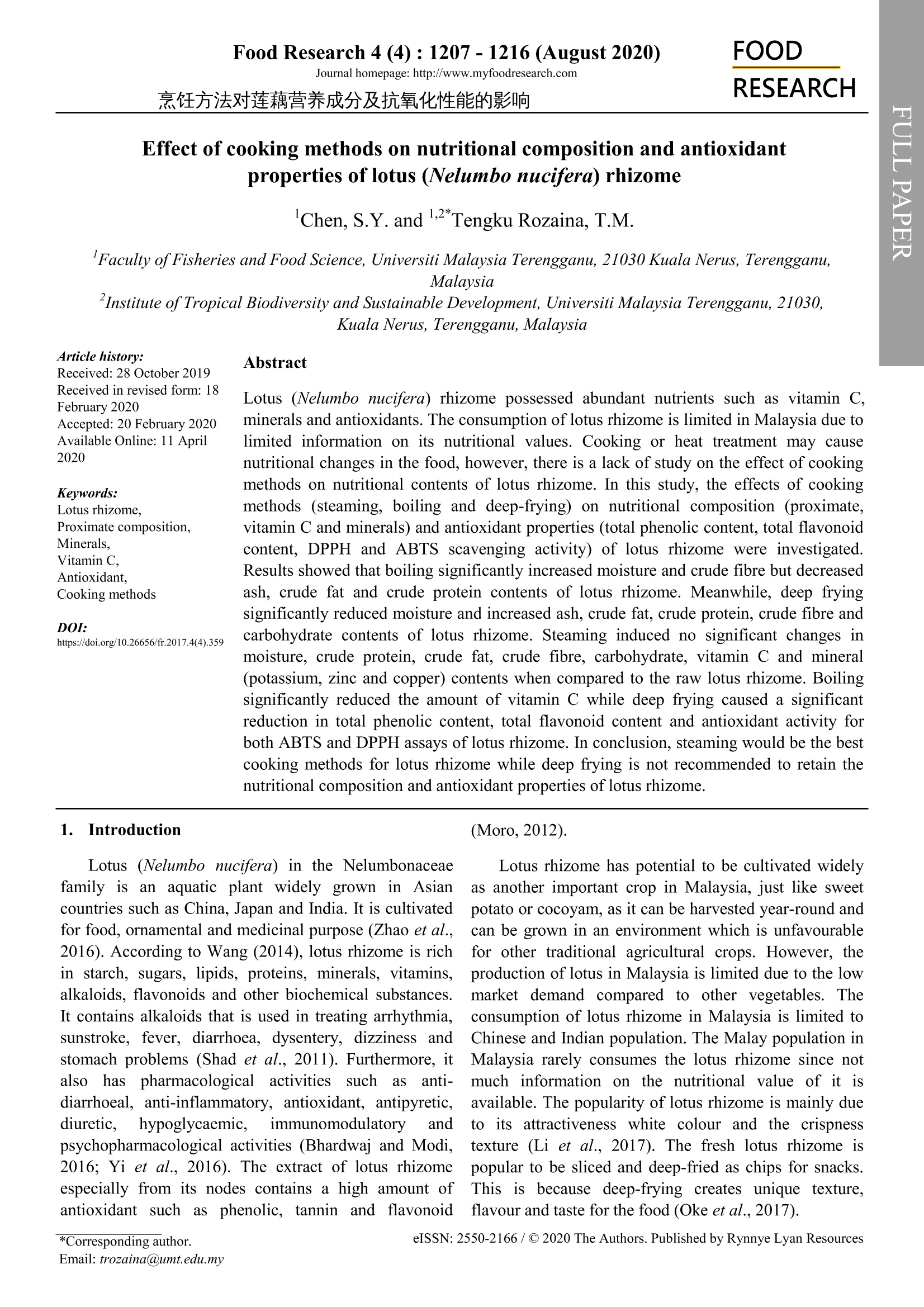
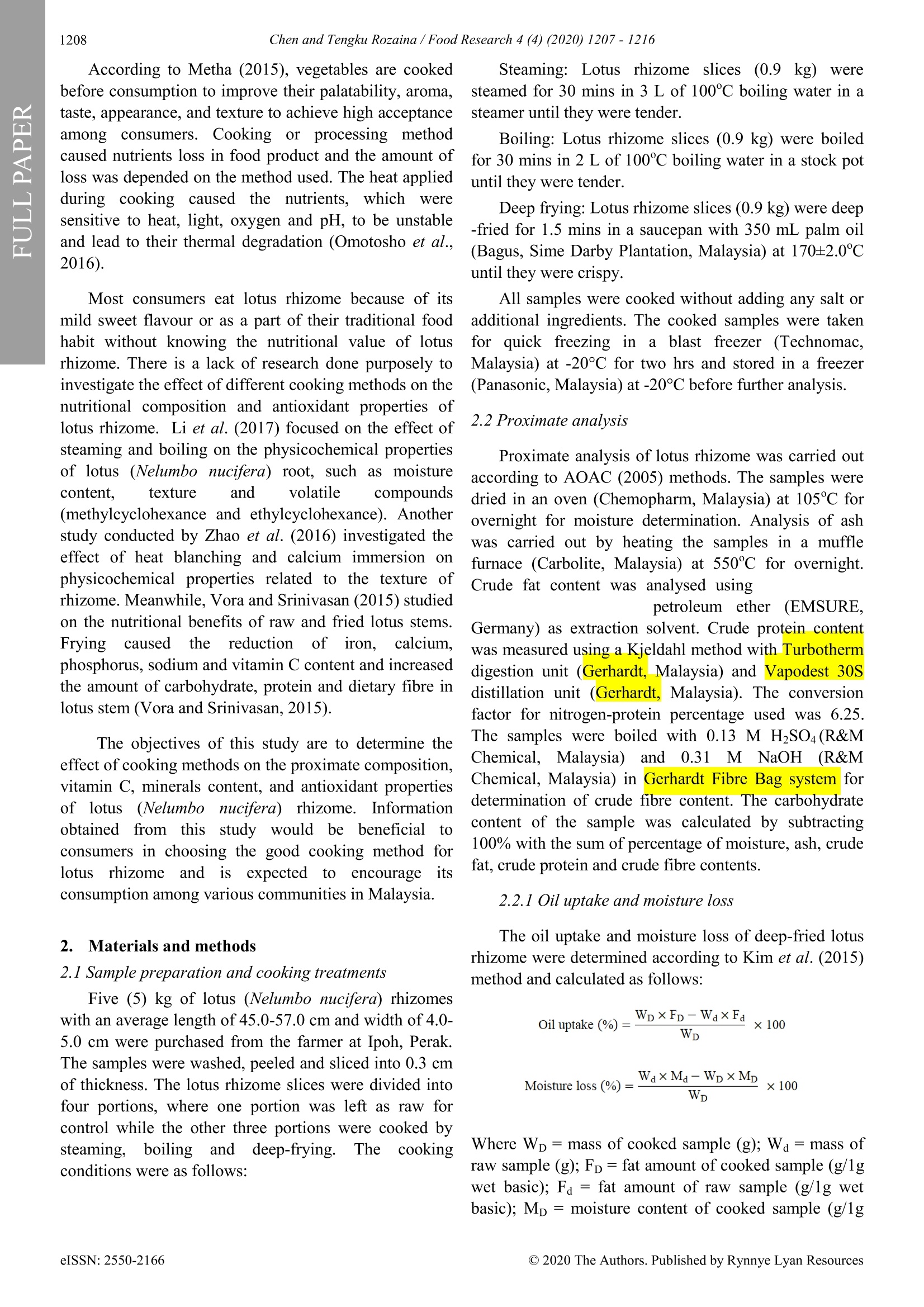
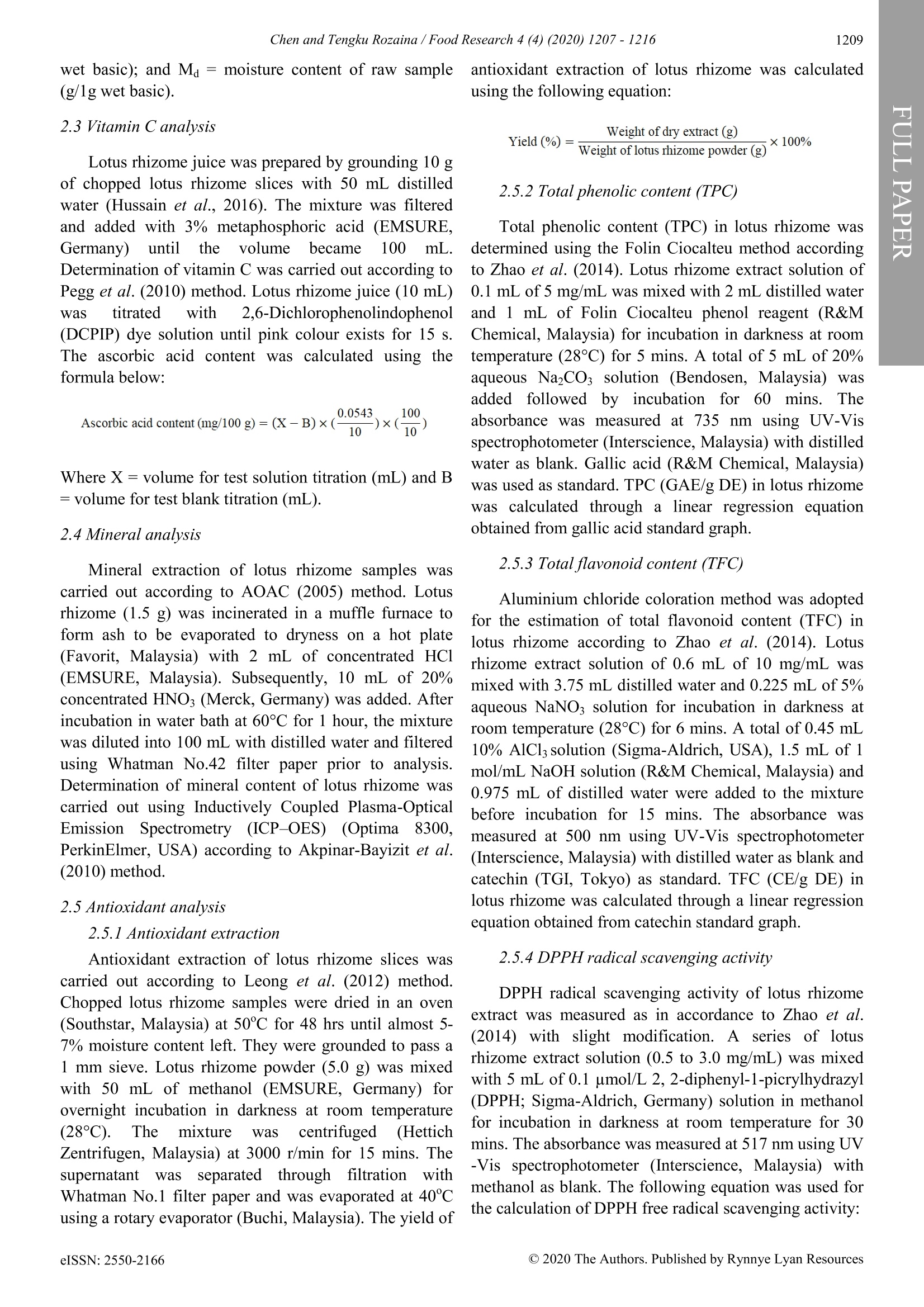

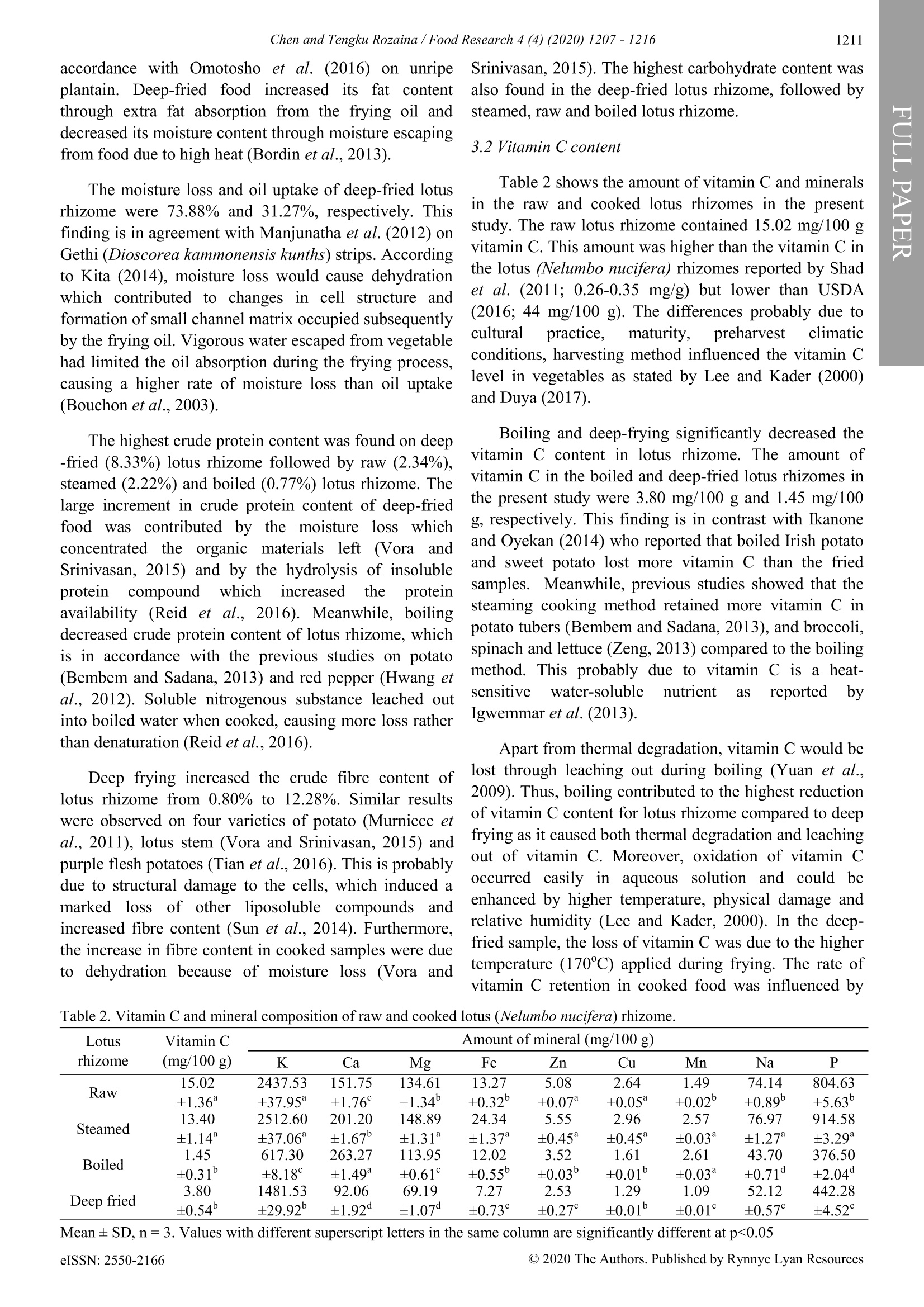

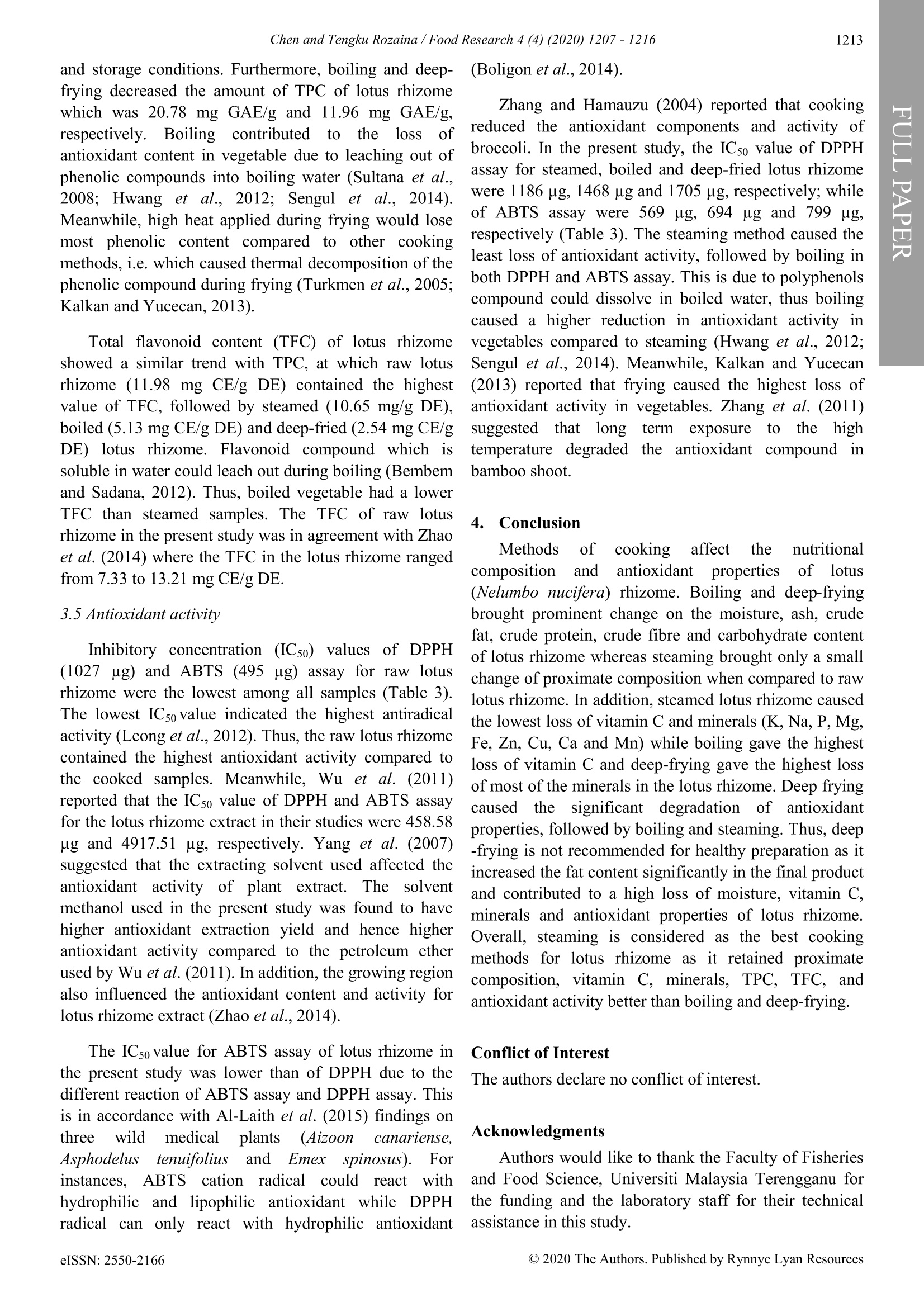
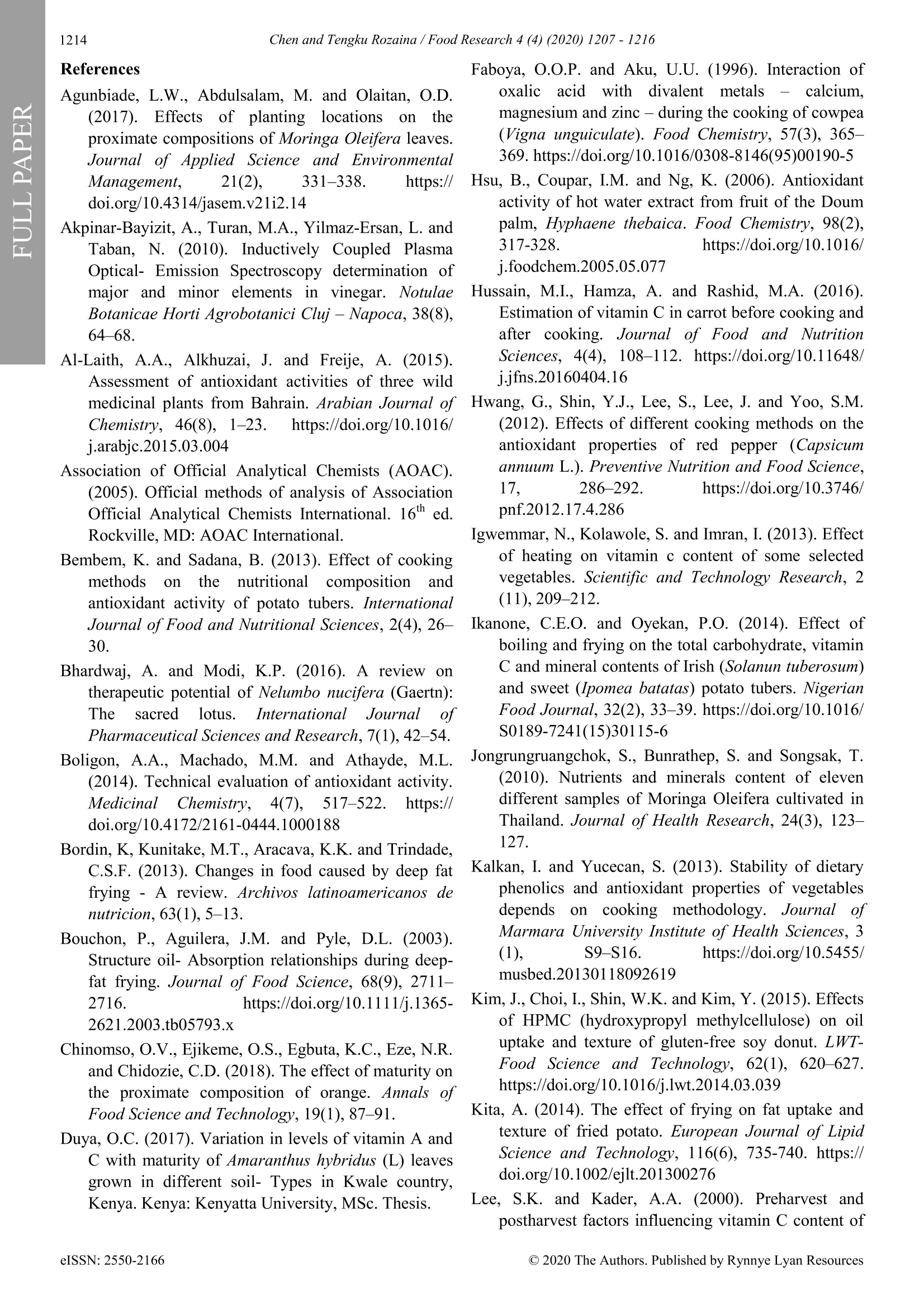
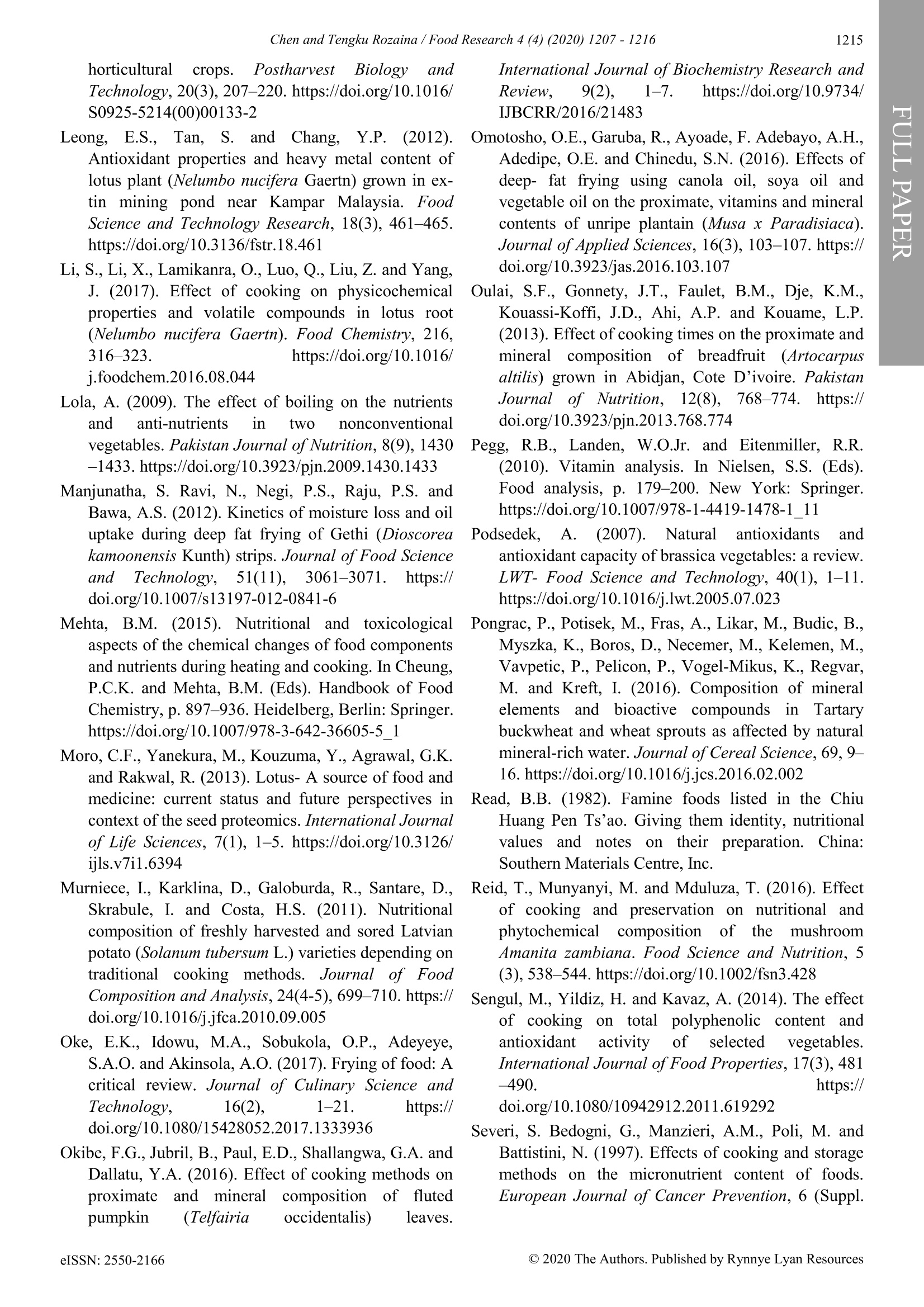
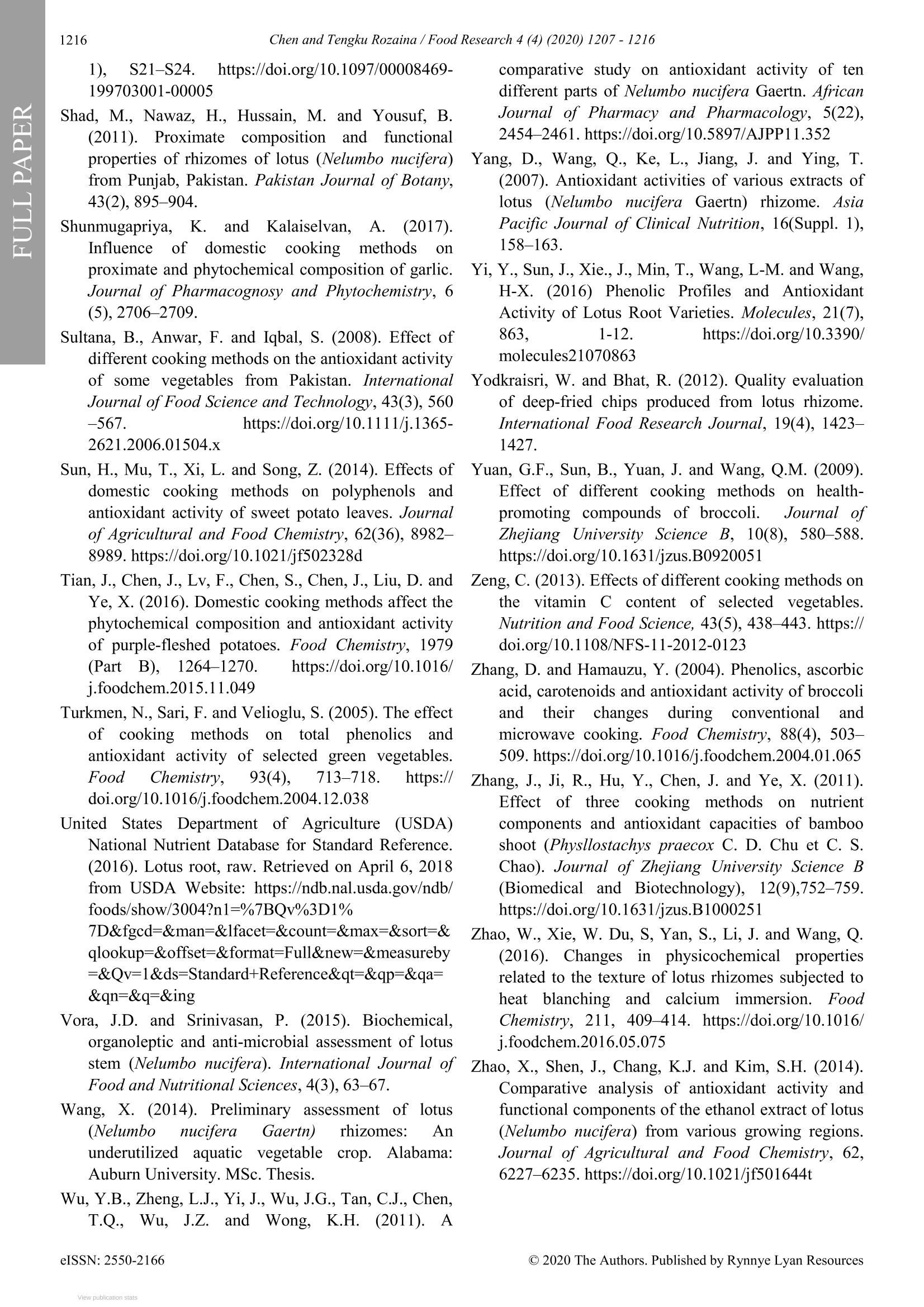
还剩8页未读,是否继续阅读?
中国格哈特为您提供《莲藕蛋白质、脂肪、纤维含量的检测》,该方案主要用于蔬菜中营养成分检测,参考标准--,《莲藕蛋白质、脂肪、纤维含量的检测》用到的仪器有格哈特全自动凯氏定氮仪VAPODEST 450、格哈特维克松废气实验室废物处理系统涤气VS、格哈特全自动快速索氏提取SOXTHERM、格哈特红外加热消解快速消化系统TTs125、格哈特全自动型纤维分析仪FT12、德国加液器MM、凯氏定氮催化片
相关方案
更多
该厂商其他方案
更多










